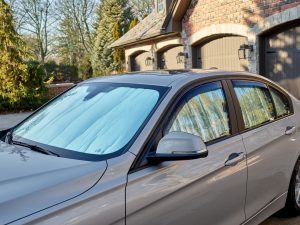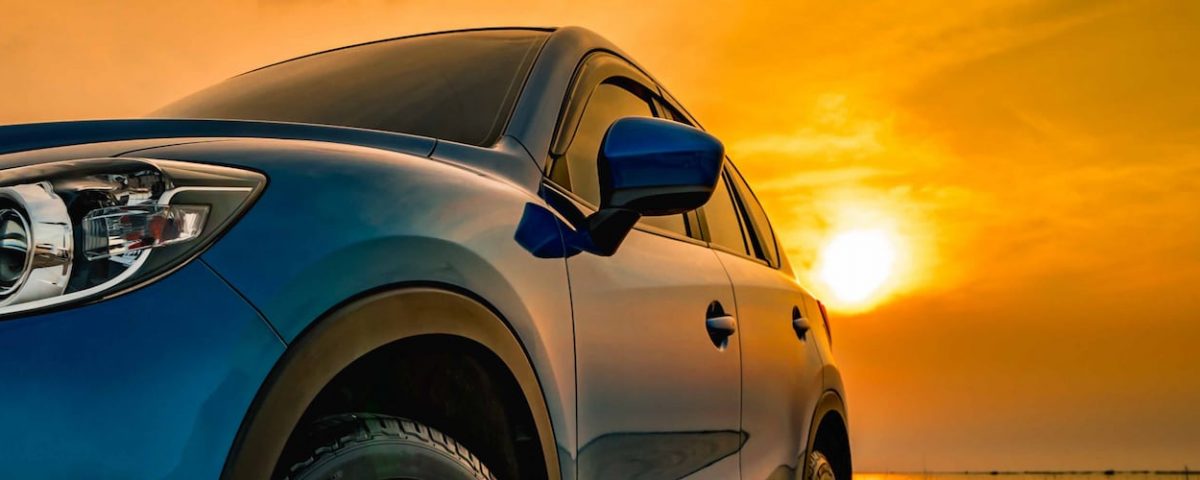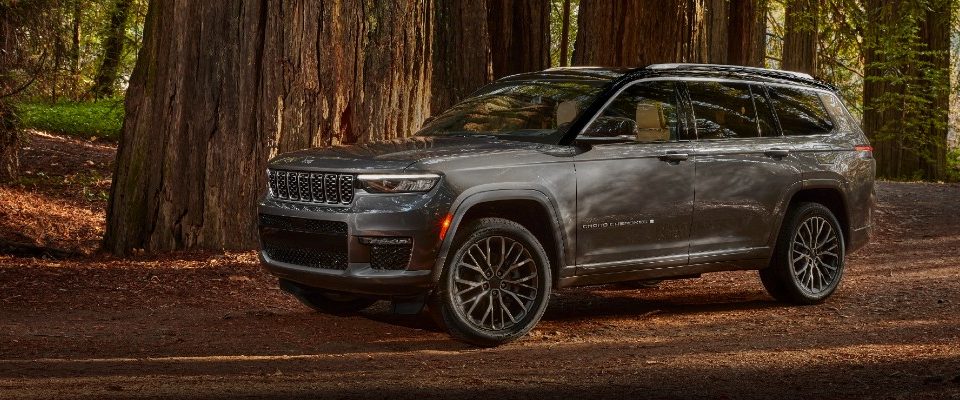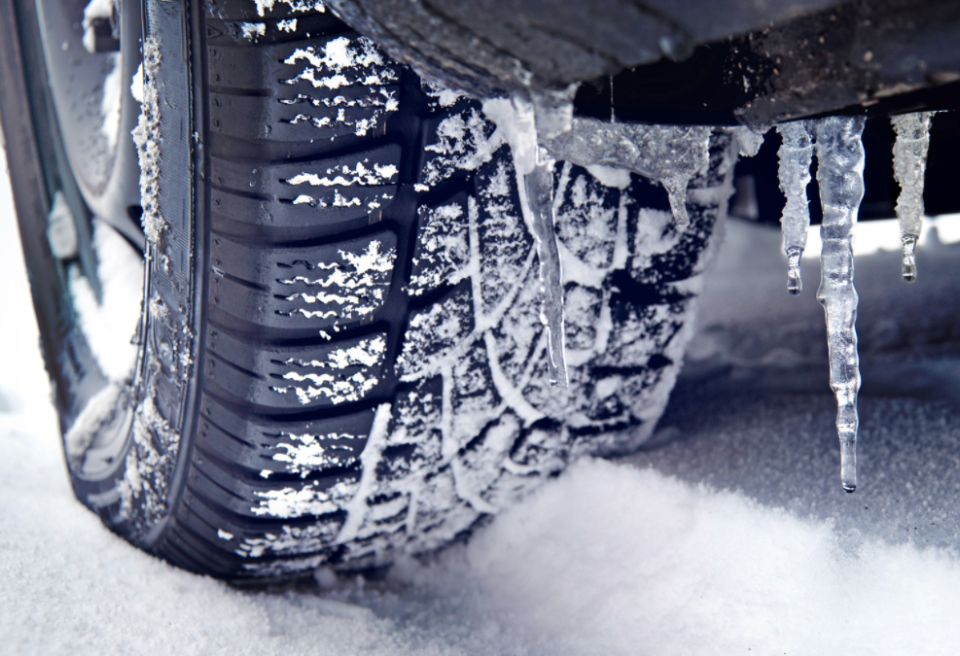Prepare Your Vehicle for Summer

How is your Credit Score calculated?
04/26/2021
The Ultimate Home Vehicle Wash
05/14/2021Prepare Your Vehicle for Summer
Winter is over, the sunshine and higher temperatures are a welcome change to what you have been going through. While it hasn’t been easy on you; it’s been no picnic for your vehicle either. The cold-cranking starts, the salt, sand, frost heaves; your vehicle has taken a lot of abuse. As bad as that was, summer can be even worse on your vehicle. So, what do you do to prepare your vehicle for driving in hot weather?
Under the Hood
- Check all fluids (we will get into more detail below)
- Check your belts and hoses
- Change the Air Filter
- Check your battery
- Make sure your air conditioner is working properly (this is important)
- Change any light bulbs that may be out
Exterior
- Wash and wax your vehicle
- Take care of your tires (most important)
- Invest in a vehicle cover
- Inspect anything you may be towing
Interior
- Emergency Kit
- Extra Water
- Check your upholstery
- Update your GPS
- Paperwork
How Does the Heat Affect my Vehicle…Under the Hood?
Your vehicle engine is designed to operate at around 120 Celsius. Well, in some places in the summer the outside temperatures are nearly half that. So that is putting a lot of strain on your engine. What can you do to take care of your vehicle engine in summertime temperatures?
Check the fluids…all of them. Fluids are the lifeblood of your vehicle, when it gets dirty or old it can really affect the performance of your vehicle. The beginning of the summer driving season is a great time to make sure everything is okay; especially with the extra strain, your motor may be taking. Let’s take a look at the five different fluids that should be checked for summertime driving.
Oil
Get your vehicle on a level surface and while your engine is still warm check your oil. See the video below for the proper procedure on how to do this. What are you looking for? First, you want to look at the color. If your oil is a nice amber color that is good, that means that it is not too old. Second, make sure it is up to the fill line. If you meet these first two criteria you are all set.
(Source: ChrisFix )
Obviously, if you are not at the fill line, add your manufacturer’s recommended oil until it reaches the fill line. Be careful not to overfill your engine oil, because this can be damaging to your engine.
Now if your oil is black and thick, it is time for a change. Take your vehicle to a service station and have it changed out. Depending on your vehicle and the type of oil you use your oil change should last anywhere from 3000 to 7000 KMs. For regular non-synthetic oils, you should be good for 3000 to 5000 KMs.
If you are splurging on synthetic oil, are looking at a 5000 to 7000 KMs range before you need a change again. These recommendations will vary on the type of oil you are using, your vehicle, the way you drive, and the climate you live in.
Coolant
Next, to your oil, your engine coolant maybe your next most important fluid. It keeps you from overheating and keeps your air conditioner cooling you down. The place to look for this is the reservoir tank, not the radiator itself. You are looking for two things here:
- Make sure that the reservoir tank is full. You can clearly see the level in the reservoir tank. Make sure you are using a 50/50 mix of water and antifreeze (which you can purchase pre-made), open the lid, and pour in until you reach the fill line.
- The thing you are looking for is the color of the antifreeze coolant. Here in Canada, I have seen it be typically green or orange; but it can come in red or blue as well. If it has a rusty color to it, with floaties, you will need to take it to the service shop and have the system flushed out.
A more serious concern is if your coolant has an oily appearance to it. This could be the sign of a much more serious problem and needs to be looked at by a professional.
It will only take a few minutes to check these things out and they are inexpensive steps to take. But they will save you a lot of money and hard ache down the road if you keep them maintained.
Here is a video, If you want to change cooling fluids by yourself.
(Source: ChrisFix )
Transmission Fluid
Yes, even your transmission has fluid that needs to be changed. The frequency of when it should be changed is up for debate and depends on the type of transmission that you have. The manufacturer also has some opinions as to when you should change your transmission fluid.
With that being said, you should check the transmission fluid occasionally, and what better time to do that than summer. So, what are you looking for? Generally speaking, most automatic transmissions have a dipstick under the hood that measures your transmission fluid. The transmission fluid should be a nice shade of red, this would indicate clean fluid and you should be fine.
Just like engine oil, it has an indicator line showing where full is at. If you have good color and are a little bit low, get out a funnel and add some fluid to your transmission. Just, please make sure that you have the proper type of fluid recommended by the manufacturer. Also, like your engine oil, DO NOT OVERFILL the transmission fluid it can cause too much pressure in the system and your vehicle will not run as smoothly.
Manual transmissions require a little bit more mechanical aptitude to check. You will actually need to go under the vehicle and remove the drain plug from the transmission to do this. If you are up to this, I salute you, and here is a video to show you how to do it.
(Source: ChrisFix )
Windshield Washer Fluid
Okay here is an easy one. Windshield washer fluid is not as critical as the other three fluids mentioned above, but it is still vital…especially if you like to see where you’re driving. There is no special procedure or anything like that when checking your windshield washer fluid.
Find the windshield symbol on the cap of the reservoir tank. Check to see if there is fluid in there and if not top the tank off. You can even overfill this one a bit and it’s not going to hurt the vehicle any.
Power Steering Fluid
Have you ever tried to turn a vehicle without power steering? It is surprisingly difficult. I had a vehicle with no power steering once, and it’s an easy thing to take for granted. Now all modern vehicles have a sophisticated power steering system that makes it easier for us to drive. The lifeblood of that system is the power steering fluid. Again, there is not much for you to do here, but it is important to check the levels.
Low levels of power steering fluid will cause you a more difficult time steering your vehicle. It also could potentially damage the power steering system which you do not want to do. So, for a few dollars to pick up a bottle of power steering fluid per your vehicle’s specifications and top off the reservoir.
Changing the fluid should be left to a professional. If the fluid looks dirty, is dark in color, you may want to ask your mechanic to flush the system for you. Yes, it will cost you, but it will be a lot cheaper than repairing your component in your power steering system
(Source: ChrisFix )
Brake Fluid
Last but certainly not least is the brake fluid. This is probably just as important as the engine oil. Why? Because it gives your vehicle the capacity to stop. Low brake fluid will impede your vehicle’s ability to stop, and you guessed it, that is not good.
Your brake fluid is contained in a translucent container on the back wall of your engine compartment. Underneath the windshield and usually on the drivers’ side. There is a fill line on the container, make sure your fluid is at this line. Simply remove the cap and add the fluid.
Brake fluid is extremely poisonous, so handle with care. Also, if you have done this before and you have an open bottle of brake fluid; don’t use it. Brake fluid loses its effectiveness over time because it absorbs moisture from the air. So the longer that it has been sitting on your shelf, the less effective it will be in stopping your vehicle! Not a good thing.
(Source: ChrisFix )
Put a Filter on It
While you are checking and changing all of those fluids in your vehicle, why not change the air filter as well. I like changing the air filter; it’s cheap and easy and makes me feel like I accomplished something.
The air filter keeps dust and dirt from entering the inner workings of your motor, so it has a very important function. A clean air filter allows your engine to run more efficiently. After a long winter of driving your air filter can become clogged with salt, sand, and other debris.
Check Your Belts and Hoses
Not a very sexy piece of your vehicle, but a very important one. Your belts are what makes your engine turn and the hoses deliver the fluids to where they need to be. You don’t see them very often, but when they fail, you will know it. A general recommendation is that belts and hoses be replaced every four years.
Air Conditioner
This should be a no-brainer. You are going into the summer months; you want to make sure that your air conditioner unit is working.
Truth be told, it is not much you can do for your air conditioner. Sure, you could add some refrigerant yourself if you feel like the AC is not getting as cool as it should.
So, what can you do then? Actually, if you have checked the belts and hoses, you have probably already done it. Look for cracks and wear on your belts and hoses since these are the driving force of your AC system. If you see any that look damaged, then get them repaired.
A second thing that can be done is cleaning off the air conditioning condenser. This little box looks similar to the radiator at the front of your vehicle. If there are any obstructions in the way, (i.e. loose leaves, sticks, mud) remove them. This will allow the air to move more freely and thereby causing coolness.
Clean your battery
Even your battery needs a little TLC. There are two basic steps you can take to make sure your battery is in peak operating condition for summertime.
First, clean your terminals. Corrosion can build up on the terminals from a mixture of hydrogen gas and battery acid. This corrosion can interfere with the connection between your terminal and the cable and cause you some issues. So how do you clean your battery terminals?
A simple solution of water and baking soda will rinse away the corrosion immediately. I never used a specific amount. Usually, I used a cup of water and a few teaspoons of baking soda. I would pour them over the terminal and the corrosion would rinse away. If there is a little bit of corrosion left, use an old toothbrush to remove the rest.
Then with a rag, I would dry the terminals off. Be careful not to touch the corrosion; remember it has a bit of battery acid in there. It will start to irritate your skin if you come into contact with it.
After this, I like to take a terminal cleaner and scrub the terminal and the cable connection. This removes the dirt and grime from the battery and will ensure good contact.
One Final Step
A final step I sometimes take is applying a battery corrosion inhibitor. It is a chemical compound that you spray on your battery terminals to prevent corrosion from building up.
Now, I have had good and bad success with these corrosion inhibitors. On one hand, they prevented the corrosion from building up. On the other hand, the no corrode gel itself gave me some connection issues. So, take it for what it’s worth.
A second step you can take is to check the water level in your battery. On some batteries, you may not have this option and there is nothing you can do. But a standard battery will have a panel on top that you can pop off.
This is not difficult to do, but again you need to be careful. You can pry the cap off with a flat head screwdriver; just be careful not to puncture the battery. If you see the water levels are low, add distilled water until the levels are topped off.
If you are uncomfortable with it, you can ask your mechanic to check it out for you.
Bulbs and Things
Since you have done all of this wonderful maintenance to your vehicle under the hood. Why not take a few more minutes to replace all of those bulbs that are out on your vehicle?
This could be under your hood or in the rear of your vehicle or inside. That parking light upfront that hasn’t worked in a while. Or the extra taillight in the rear or that pesky dome light that hasn’t worked in months. Now that your vehicle has a fresh start for summer, why not change out these little items.
How Does the Heat Affect my vehicle?
You think your engine is the only thing that gets beat up during the summer months. Think again. Your exterior takes a pounding from the sun and elements. I live in Winnipeg and the sun has done some damage to the paint on my truck. What could I have done to prevent that? Keep reading.
The good news is taking care of the outside of your vehicle is a lot easier and much more enjoyable than taking care of things under the hood.
Give your vehicle a bath
This one is easy. Winter is brutal on your vehicle, both inside and out. The salt and sand corrode your undercarriage. Mud and melting snow make a mess inside your vehicle. Before you head off on a summer road trip or over to the beach take an afternoon and wash your vehicle.
This will probably take more than just the first deposit to get through. Not only do you want to hit the exterior paint job to get the dirt and grime off of there, but don’t forget the wheel wells and even the engine compartment. This may seem overkill, but in the long run, it will help with the overall maintenance of your vehicle.
Also, make sure you wash the inside and outside of all the windows. Dirt and residue build-up everywhere A thorough cleaning of the inside is well worth the effort.
(Source: ChrisFix )
Tires
This should probably be at the top of the list. Your tires are perhaps the most important safety feature on your vehicle. They are certainly one of the most abused. A tire that is not properly inflated can be very dangerous.
First, if you live in an area that requires snow tires; be sure to switch them out with your summer tires. Winter tires have a more aggressive tread and are not designed for summertime travel. Besides the noise they make gets to be unbearable. This goes double if you have studded snow tires.
So, what are you looking for on your tires? You are looking for the amount of tread left on your tire. Look for uneven wear or bubbles. If you see any wires, this is very bad and you need new tires immediately.
If you have hit any major potholes or drove over frost heaves, you may need an alignment. Those things will kill your tires. In addition, this may be a good time of year for a rotation, you can also inspect the brakes while you are doing this.
Don’t forget your spare. If your spare is contained underneath your vehicle, it’s good to drop it down every now and then.
Obviously, your spare tire isn’t going to have a lot of tread wear, but you do want to make sure that it is properly inflated and ready to go.
Brakes
Right next to the tires, are the brakes, in the area of safety importance. But seriously the brakes endure extreme temperature changes during the winter months that can damage them.
Checking the brakes requires a little more mechanical ability. Removing the tires and then the brake pads are the best way to make an inspection. On the pads, you are looking for uneven wear and cracking.
This will also allow you to inspect the drums and rotors. However, if you don’t know what you are looking at, you are not in a position to make an assessment. If you suspect that your brakes may not be functioning properly, take your vehicle to the mechanic. While he is rotating your tires, he can check your brake pads and advise you.
Some indications that your brakes may need to be replaced would be a squeaking or grinding sound coming from your tires. Also, be aware of how far you are pushing down on your brake pedal and how long it takes to stop. If any of this feels odd to you seek the advice of a professional.
(Source: ChrisFix )
Windshield Wipers
This is an excellent time to inspect your windshield wipers. They, too, have taken a lot of abuse over the winter months. Windshield wipers should be replaced every six months anyhow.
They were also subject to extreme temperature changes and elements. So, look for any tattered rubber. Check to see if the wiper arm has been bent. Look for any rot or cracking on the rubber part of the blade. All of this can have an impact on how well your wipers will perform.
Your windshield wipers are one of those items that you don’t realize you need to replace until you are caught in bad weather. So, while you’re thinking about it go ahead and replace them.
(Source: ChrisFix )
How Does the Heat Affect My Vehicle’s Interior
Your vehicle’s interior can become a virtual oven. Especially when left out in the direct sunlight. All of that heat inside your vehicle will eventually damage your vehicle’s interior surface. Now while these are not critical to the safe operation of your vehicle; you want to take care of this so your vehicle will last.
The two areas that are most susceptible to damage are the seats and dashboard. They bear the brunt of the sunlight that is directed into your vehicle. There are a few easy steps that you can take to protect your vehicle’s interior during the hot summer months.
Here in Winnipeg, it is an art form to find the shady spot in the parking lot during the summer. It almost doesn’t matter how far away you have to park. If you can find a spot under a tree, take it. The summertime temperatures here in Manitoba hover around 30 Degrees with the hot days coming in closer to 40.
Another inexpensive option is a sunshade across the windshield. You actually want a fairly good quality one and preferably one that reflects the sunlight away. You would not believe what a difference one of these will make in your vehicle.

A final option to protect your vehicle is to install some UV blocking window tint. This is a more permanent option, but an effective one. Just be sure to pay attention to the level of tint, because you can run into legal issues if it is too dark.
There are DIY kits for applying window tint or you can have it professionally done. Having it professionally done will obviously cost you more, but you may be able to avoid any legal problems and it may look a lot better.
Summertime Vehicle Preparation…Miscellaneous Items
Okay, so we covered the three major areas of your vehicle and how to prepare them for summertime driving. Here are some miscellaneous items you may want to take care of before you hit the road this summer.
Check over and update your emergency vehicle kit. We all raid the kit when we don’t have any Band-Aids in the house. So now is a good time to go over your kit and make sure it is fully stocked. Also, if there are any expired items in the kit; time to throw those out and replace them with new ones. Click over here to read how to build your own emergency kit.
Keep some extra water in your vehicle. Water is around a dollar a gallon at the grocery store. Grab a couple of gallons and keep them with you. You may never need them, but you will be happy you have them when you do.
Check all your paperwork. You have given your vehicle a thorough going over. You might as well make sure your insurance and registration are all up to date. This, too, will save you a world of hassle if you should happen to need them. Hopefully, you won’t.
Update your Garmin (or more frustrating TomTom) GPS maps. Most people use their smartphone mapping app to guide them anywhere. However, if you are still using one of the independent GPS units, maybe it’s time to update the maps and waypoints before you head out this summer.
Final Thoughts
You depend on your vehicle to get you safely through the summer, whether it’s your daily commute or an epic road trip. Take a little bit of time to take care of your vehicle so you have peace of mind knowing that you did everything possible to ensure safe driving. Yes, it will take some time, but it will be well worth it in the end.




